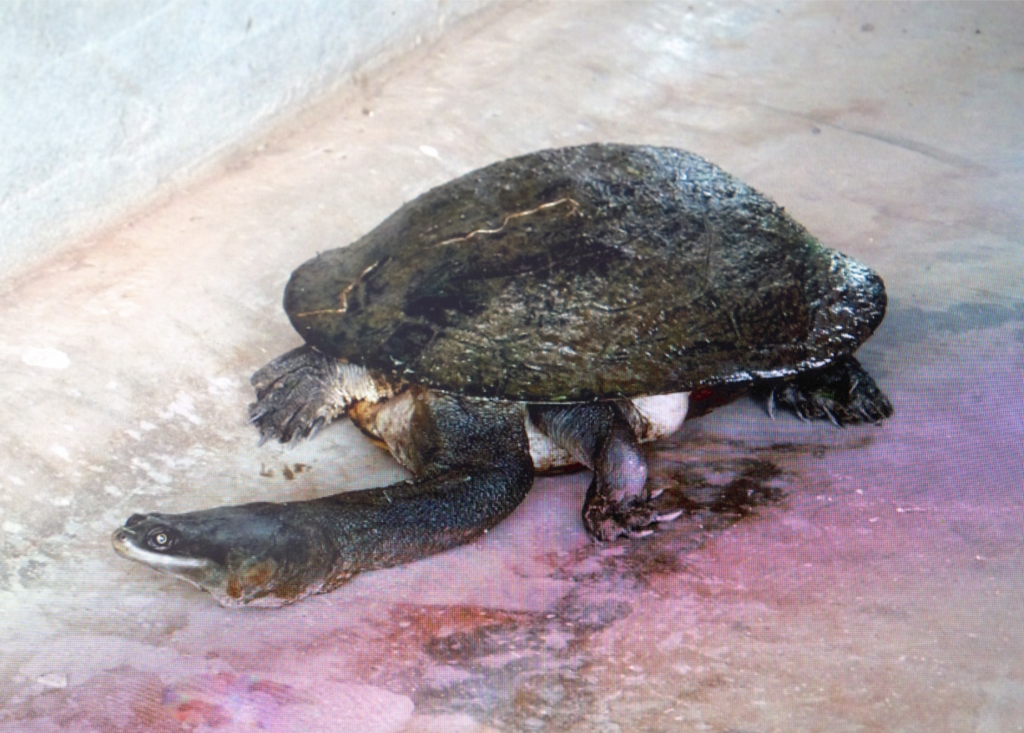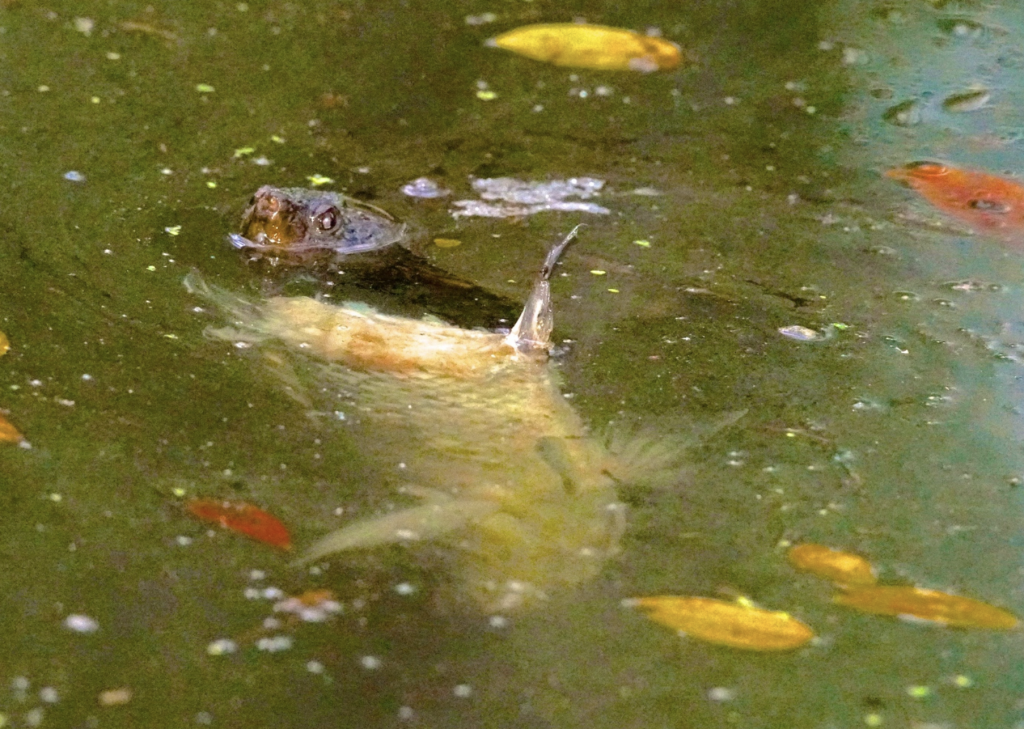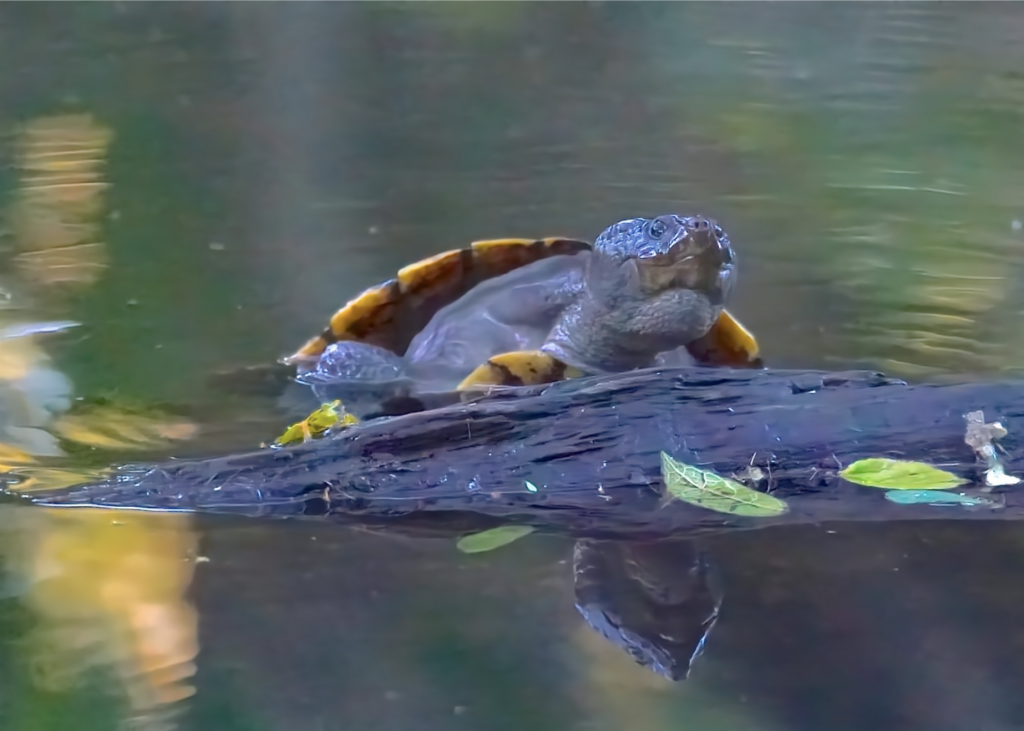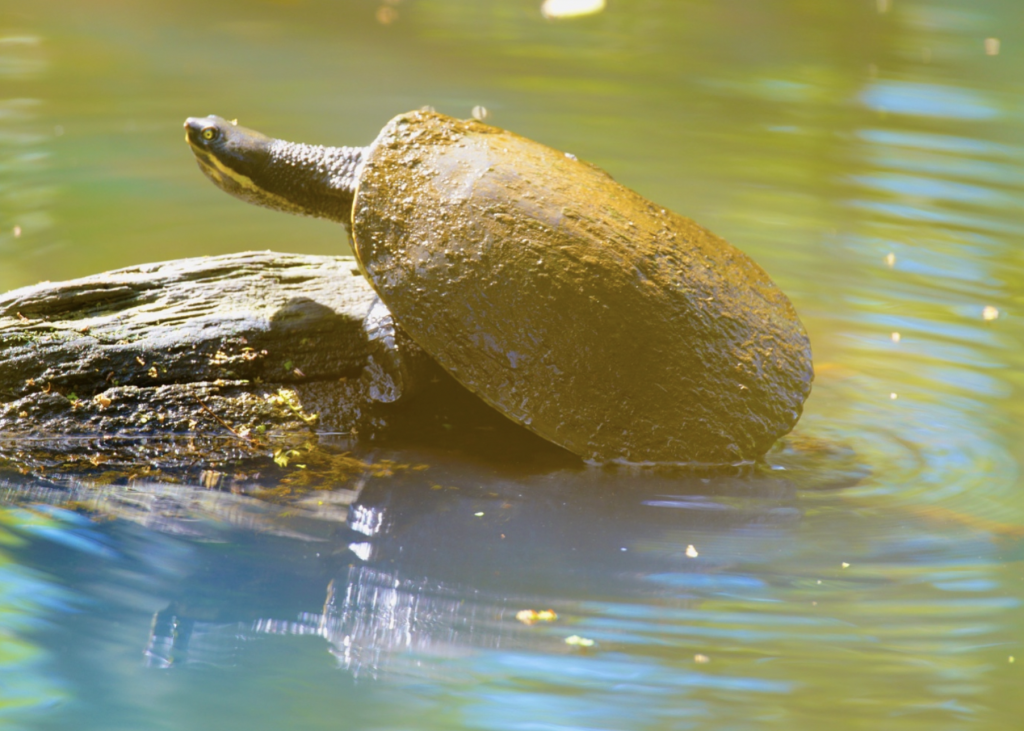There are four species of Freshwater Turtles found in the Moggill Creek Catchment. They are common in Moggill and Gold Creeks and Gold Creek Reservoir and these species are well established and under no threat.
Earlier information about these reptiles called them Tortoises, but recently that name has been reserved to land dwelling Tortoises, which are not native to Australia.
Broad-shelled River Turtle. This species often travels overland during mating season. Photo: Ed Frazer
Freshwater Turtles can be quite long living though few reliable records have been kept. A span of 50 years or more seems reasonable.
The eggs are laid on the banks of streams in soil which can vary from sand to clay. The incubation period can be from several months to two years and is influenced by temperature and rainfall.
Many eggs are lost to drought and predation by water dragons, goannas, water rats, birds and foxes. The hatchlings are also preyed on by catfish, eels and even Platypus, but a few survive and it is not uncommon to see a full range of sizes swimming together in the creeks.
The males are generally smaller than the females and they are often seen following the females for a considerable time in an attempt to mate.
Turtle eating a dead fish in Gold Creek. Photo: Ed Frazer
They feed on a wide variety of items, but prefer shrimp, insect larvae like dragonflies, and clams which they crush by attacking the edges of the shells with their powerful jaws until they open. They also clean up any dead fish and aquatic plants and any fruit that drops into the creeks such as Mulberries.
A Saw-shelled Turtle climbing on driftwood to enjoy the sun in winter. Photo: Ed Frazer
A Brisbane Short-necked Turtle climbing on a sunken log in Gold Creek. Photo: Ed Frazer
Most of their feeding is in the two hours after sunrise and before sunset, but they will
respond to a feed of bread, fish or meat or better still floating fish foods or insects.
In the cooler months they can often be seen sunbathing on rocks or logs poking out from
the creek where they can drop back into the water if disturbed.
A Fresh Water Turtle Catchment Field Guide will be on the MCCG website shortly.





